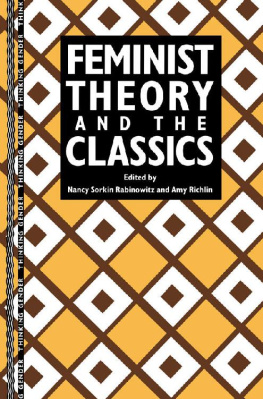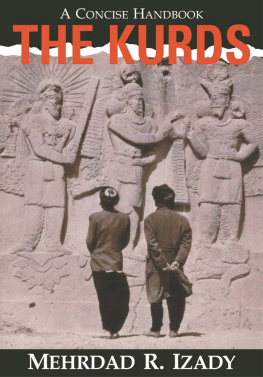The Cinema of John Marshall
VISUAL ANTHROPOLOGY
A series of books edited by Jay Ruby, Temple University, Philadelphia, Pennsylvania
Volume 1 | ANTHROPOLOGICAL FILMMAKING Anthropological Perspectives on the Production of Film and Video for General Public Audiences edited by Jack R. Rollwagen |
Volume 2 | MIDDLETOWN The Making of a Documentary Film Series Dwight W. Hoover |
Volume 3 | THE CINEMA OF JOHN MARSHALL edited by Jay Ruby |
The Cinema of John Marshall
Edited by
Jay Ruby
Temple University
Philadelphia, Pennsylvania
Copyright 1993 OPA (Overseas Publishers Association) N.V.
All rights reserved.
First published in 1993 by Harwood Academic Publishers
This edition published 2012 by Routledge
2 Park Square, Milton Park, Abingdon, Oxon, OX14 4RN
711 Third Avenue, New York, NY 10017
Routledge is an imprint of the Taylor & Francis Group, an informa business
No part of this book may be reproduced or utilized in any form or by any means, electronic or mechanical, including photocopying and recording, or by any information storage or retrieval system, without permission in writing from the publisher.
Editorial Assistant: Janis Essner
Library of Congress Cataloging-in-Publication Data
The Cinema of John Marshall / edited by Jay Ruby,
p. cm. (Visual anthropology ; v. 3)
Includes index.
ISBN 3-7186-0557-0.
1. Marshall, John, 1932-2. Motion pictures in ethnology. 3. San (African people) Pictorial works. I. Marshall, John, 1932-
II. Ruby, Jay. III. Series: Visual anthropology (Series); v. 3.
GN21.M258C56 1992
305.8-dc20
92-28923
CIP
CONTENTS
John Marshall
Carolyn Anderson
Thomas W. Benson
Compiled by
Sue Marshall Cabezas
Nancie L. Gonzalez
Compiled by
Claire Ritchie
Megan Biesele
John Bishop
Compiled by
Sue Marshall Cabezas
Visual Anthropology is a book series devoted to the illumination of the human condition through a systematic examination of all that is made to be seen. It is our intention to demonstrate the value of an anthropological approach to the study of the visual and pictorial world. We intend to present ethnographic studies of the cultural complexities of pictorial media production, analyses of the visible world of nonverbal communication from micro-studies of body movement to macro-views of the built environment, and unique attempts to communicate an anthropological understanding through pictorial means. The result will be a deepening of our knowledge of how visual and pictorial communication functions in our quest to make meaning.
Jay Ruby
John Marshall
In 1986 the United States ambassador asked the foreign minister of the Republic of South Africa if his government was going ahead with a plan to complete the dispossession of the peoples called Bushmen in South West Africa. The vast, dry territory was still a South African colony. SWA did not gain independence until 1989, when the colony became the nation of Namibia after an election sponsored by the United Nations. Under the terms of the colonial administration, the president of the RSA was responsible for the fate of all the peoples classified as Bushmen.
The official classification was racial, not ethnic, although seven peoples speaking different San languages and dialects were the original inhabitants of the colony. The Ju/hoansi,1 whom our family studied in Nyae Nyae in the 1950s, speak a dialect of !Kung, the northern San language; they are often called !Kung in books and films although they can barely understand the language of the !Kung from Angola. Ju/hoansi have hunted and gathered by the waterholes of Nyae Nyae for millennia, and were the original inhabitants of northeastern Namibia.
Ju means person; /hoan means correct or proper as in correct speech and proper manners; si is the plural suffix. People call themselves Ju/hoansi the way Germans say they are German, speak German and live in Germany. In Nyae Nyae, the people inherited rights to their ancient communal land from their Ju/hoan ancestors. No land or rights to an ethnic homeland flowed from the fabricated classification Bushman.
About thirty thousand people on whom the classification had been imposed, including most Ju/hoansi, were totally dispossessed in SWA in the 1980s. They were without land on which to farm and produce a subsistence. Most were without work for wages or even for rations of corn meal. Many were without enough water. The Bushman population was declining in the colony from the effects of malnutrition and disease.
The only people called Bushmen who still retained access to a fragment of communal land in SWA were about two thousand Ju/hoansi in Eastern Bushmanland. Many were the children and survivors of the people of Nyae Nyae. In 1970, when the South African administration established Bushmanland as the small homeland for all the people classified as Bushmen in SWA, Ju/hoansi lost 70 percent of Nyae Nyae and all but one of their permanent waterholes. Southern Nyae Nyae, about 20,000 square kilometers where a handful of Herero lived, was allocated to the Herero ethnic group. Northern Nyae Nyae11,000 square kilometerswas allocated to the Kavango people and later proclaimed the Kaudum Game Reserve.
The western two thirds of Bushmanland is a waterless waste of dry forest and deep sand. The water table lies as much as 1,000 meters below the surface. Ju/hoansi have never lived permanently by hunting and gathering in western Bushmanland. The people could survive and develop a more productive economy only in Eastern Bushmanlandabout 6,000 square kilometerswhere the water table is accessible and can be pumped by hand or wind.
In order to produce enough food to eat in their diminished land, Ju/hoansi had to begin subsistence farming in Eastern Bushmanland, the remnant of Nyae Nyae. Because the administration did not grant them ethnic status to which land rights were attached, Ju/hoansi remained wards of the state. They farmed on their communal land at the pleasure of the South African government.
The plan to complete the dispossession of the San in SWA involved the expropriation of Eastern Bushmanland for a game reserve. In the reserve, a few Ju/hoansi were to be preserved wearing skins and dancing for the tourists in a plastic Stone Age. The rest, including fifteen subsistence farming communities, were to be evicted. Like the other San peoples, the Ju/hoansi of Nyae Nyae would have had no land on which to produce a subsistence, no work, and no welfare support. In reply to the ambassadors question, a spokesman for the ministry said the plan to proclaim the game reserve would proceed because his government regarded the Bushmen as part of the fauna of the country.
The fauna fantasy was elaborated in ways that will be familiar to anyone who has seen or experienced oppressive discrimination at the bottom of an economy. According to the fantasy, Bushmen have no notions of land rights or concepts of property. They have no sense of time and cannot distinguish the past from the future; they cannot foresee a crop when they plant a seed. They are completely fatalistic. A killing instinct causes them to eat all livestock immediately, even when they arent hungry. And so on.







